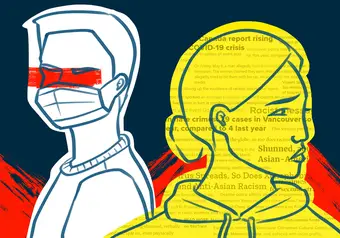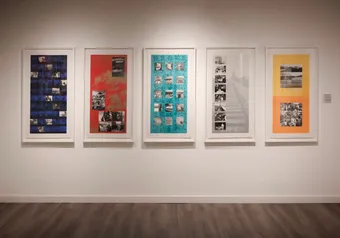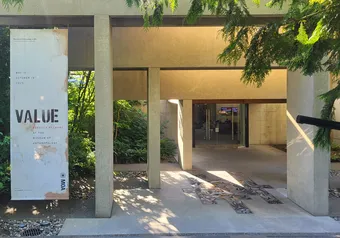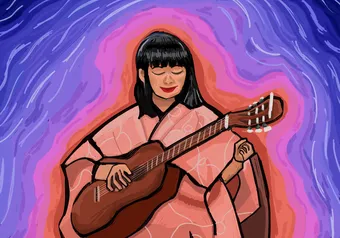As a result of the COVID-19 pandemic, there has been a meteoric rise in the number of hate crimes across the country, but particularly in the city of Vancouver, which has seen a 97 per cent rise in hate incidents overall, but a 717 per cent rise in anti-Asian hate crimes just this year alone.
While remembering the past can be hard to bear, by looking back at the past, we can see ways in which the university itself has been intertwined in a history of anti-Asian discrimination, which has mirrored the evolution of racial politics in Canada within the last 100 years.
Righting the wrongs
At the start of World War II, the attack on Pearl Harbour catalyzed the internment of Japanese-Canadians.
The internment of people of Japanese heritage meant that 90% (approximately 21,000 individuals) of Japanese-Canadians were removed from the Lower Mainland and into internment camps in B.C’s interior and all across Canada for seasonal farm labour. As a result, 76 UBC students of Japanese descent were forced to give up their studies to endure a future of confinement and hard labour.
Unfortunately, after internment, many of the students had to abandon their education and had no possessions or financial support.
Prime Minister Mackenzie King gave many Japanese-Canadians a choice to either move to Japan or Eastern Canada, and many Japanese-Canadians ended up settling outside of Western Canada without the personal or professional connections needed to rebuild their lives.
Many years later, the conversation around Japanese internment found its way into the voices of student activists and academics demanding reconciliatory actions towards the Japanese-Canadian community. Although the university initially said the forced removal wasn’t their fault, much of the pushing and protesting from these activists eventually gave way to a positive outcome.
In honour of the 76 Japanese Canadians students who were sent to internment camps, the UBC Senate approved the creation of a degree program studying anti-Asian racism and the preservation of Asian cultural heritage in 2011, known as the Asian Canadian and Asian Migration Studies (ACAM).
In addition, in 2012, UBC awarded honorary degrees to all the students who had been forced to leave in 1942 and started the 1942 Japanese Canadian UBC Students Fund as a tribute to the removed Canadians.
The Notorious C.L.A.U.S.E: The “Non-Caucasian” Clause
(photo to come)
In the early 1950s, UBC fraternities were notorious for the aptly named “Non-Caucasian” clause, a racial and religious discriminatory clause that restricted fraternity membership to white Christians.
In order to quash this racist policy, The UBC Student Council passed a motion that required all fraternities to remove racial and religious discriminatory clauses from their constitutions in 1952.
The discriminatory clauses were removed in the 1960s, but not without some hidden resistance. To avoid any further backlash, fraternities began holding “gentleman’s agreements” to maintain these practices under the radar, allowing them to preserve racist traditions while appeasing the Council. Forcing the fraternities to play nice didn’t do much to help foster a culture of inclusion.
However, the growing publicity of the controversy made students question the integrity of the IFC members altogether — mainly in the student government’s political affairs.
With a high number of fraternity brothers taking seats in student government, it became apparent that many candidates were voted in due to fraternity allegiance rather than their competence.
For UBC sororities, discrimination was less immediately apparent. To restrict their intake of POC members, many sororities simply “forgot” to mail them their application forms.
“The sororities proudly announced that they had no such [“Non-Caucasian”] discriminatory clauses in their constitutions. And yet they too had no Asians,” says Sheldon Goldfarb AMS archivist and author of the Hundred-Year Trek.
Although sororities weren’t as explicit in their discrimination policies, their actions hurt just as much. The actions were justified by UBC’s 1955 Dean of Women, Helen Mawdsley, who stated that “Asian girls weren’t interested in sororities”, so why bother wasting perfectly good application forms?
Alongside the continual exposés of the Greek system, the 1950s also saw the inauguration of the AMS’ first South Asian president, Raghbir Basi, polarizing student culture.
Asian vs. Asian
In 2009, the Chinese Varsity Club (CVC) found itself in a sticky situation when they were caught posting a video ridiculing the English skills of members of newer Chinese clubs.
The video was created to mimic a Mac vs. PC ad, and featured an Asian woman next to a Asian man, representing the fictional ‘Typical Honger Club’. The woman was shown to be fluent in English while the man was filmed struggling to pronounce the word “multicultural,” confuses the word “variety” with “viagra,” and when asked where the people from his club come from, he says “Richmond.”
“The material represented a campus group as being unwelcome in a derogatory way,” said 2009 AMS VP Administration Tristan Markle.
“Their video was based on stereotypes that were offensive and that was the key part”.
As a result, the university made the club forfeit their table for the first days of Club’s Day, complete a mandatory year of probation and deliver specific letters of apology to the clubs that filed official complaints (The Chinese Students Association, the Association of Chinese Graduates, the Chinese Collegiate Society and YOURS Student Association).
Although the controversy mainly focused on the racist stereotypes in the video, it also showed a divergence in what it means to be “Asian” and the idea of Asianness all together. Since both characters were Asian (specifically Chinese), the idea of racism separated itself from race and onto different categories of distinction, like cultural belonging.
“Even though Vancouver, where I’ve spent most of my life, is one of the most diverse cities in North America, I’ve learned not to take belonging for granted. There are numerous ways in which we are reminded in daily life that our experiences or identities aren’t normative,” said Chris Lee, director of the Asian Canadian and Asian Migration Studies Program.
With an increasingly interconnected world, the idea of a single monolithic Asian culture has become increasingly obsolete.
“There’s an upholding of norms to what it means to be ‘fully’ Asian. The idea of “Asian” is constantly in flux,” said JP Catungal, assistant professor of Critical Racial and Ethnic Studies in the GRSJ Institute
“We often mobilize the term, Asian in a way that we have a continental imagination of what Asia is, but, if we only refer to continental definitions of Asia, we lose the diversity and a lot of the Asian community’s history.”
Too Asian: A Modern Remix
In 2010, an article with the original title of ‘Too Asian’ was published by Macleans, which focused on the internationalization of some of Canada’s top post-secondary institutions.
The article sparked a huge controversy, as it discussed the ways that high school students may factor in a university's racial demographic as an indication of the school’s student life and academic culture.
Explaining how a school can be “too Asian”, the students interviewed allude to the stereotypically ‘competitive academic nature’ that many Asians bring to a good-natured university campus that should focus on ‘having fun and, ultimately, prioritize Caucasian students above anyone else.
At the time, many university admissions officers and high school guidance counsellors were limiting the number of Asian applicants and keeping the number of Caucasian students “artificially high” to avoid gaining a reputation for being overly populated with Asian students.
Originally published in Maclean’s 2010 edition of Guide to Canadian Universities, the article was heavily criticized for its demeaning anti-Asian sentiments. Ten years later many of the sentiments expressed in the original article are still present in our cultural lexicon.
Whether it’s increasing gentrification, importing diseases, or stealing ‘jobs’ from white Canadians, the Asian community has historically been ostracized for being materialistic, hostile and socially inept.
Which brings us to a deeper question: Why is it that we have to constantly apologize for existing?
The idea that there is an overly excessive amount of any ethnic community is an absurd proposition. In many ways, ‘Asian culture’ has begun to ‘fit’ into Canadian culture on terms agreed upon by non-Asians; this promoting cultural assimilation rather than cultural appreciation.
Today, many universities, such as UBC, pride themselves on promoting a sense of appreciation for the diversity of students coming in and out each year.
The normalization of “Asian culture”, has only increased slightly with the rise in Asian representation in media. However, the resources made to address the needs of Asian people of colour on this campus are very limited.
“Universities can sell [themselves] as a good school for promoting multiculturalism. It becomes an asset in attracting students, but what is the relationship between ... aggressive internationalization and good business? In other words, the universities effort to attract more money from international students.” said Catungal.
The Current Situation
With the current COVID-19 pandemic, many Asians worldwide have suffered various forms of racism, discrimination, abuse and even assault.
(incidents of hate crimes that have happened this year)
Through its 100-year-old journey, UBC has grown to appreciate racial and religious tolerance, despite the historical accounts of racial discrimination. But as part of a larger global network, UBC’s history still continues to be a product of the cultural influences around it.
“As to what role Asian culture has played in UBC history, that's a huge question which I probably can't answer except to say it's been an increasingly significant one. You can't [really] separate UBC from the world around it; it reflects the world around it, or in this case, was affected by it,” says Goldfarb,
Although anti-Asian discrimination is only one of many injustices in the world today, it’s definitely one that deserves recognition as an on-going battle.
“The ongoing crisis around COVID-related racism makes me realize that I can be stereotyped and targeted simply on the basis of appearance,” says Lee.
“But I’m also reminded that peoples of colour have always created spaces of belonging to counteract exclusion - in our families, among friends, in communities and places, we find ways to connect and create the world we want to live in.”
First online
Share this article



![['auto']](https://storage.googleapis.com/ubyssey/media/renditions/cdm.arphotos.1-0164291full.width-1000.format-webp.webp)





